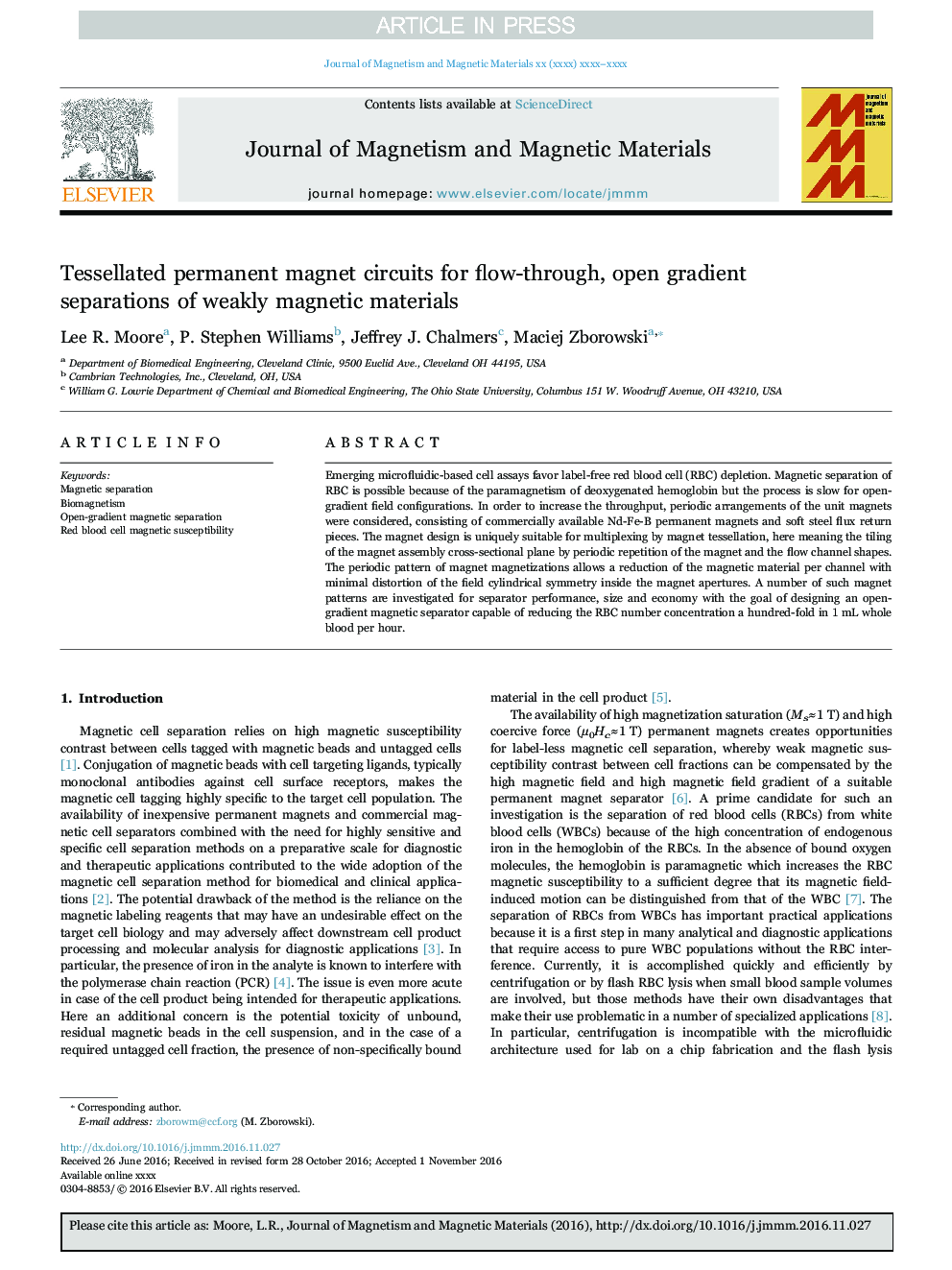| Article ID | Journal | Published Year | Pages | File Type |
|---|---|---|---|---|
| 5491201 | Journal of Magnetism and Magnetic Materials | 2017 | 6 Pages |
Abstract
Emerging microfluidic-based cell assays favor label-free red blood cell (RBC) depletion. Magnetic separation of RBC is possible because of the paramagnetism of deoxygenated hemoglobin but the process is slow for open-gradient field configurations. In order to increase the throughput, periodic arrangements of the unit magnets were considered, consisting of commercially available Nd-Fe-B permanent magnets and soft steel flux return pieces. The magnet design is uniquely suitable for multiplexing by magnet tessellation, here meaning the tiling of the magnet assembly cross-sectional plane by periodic repetition of the magnet and the flow channel shapes. The periodic pattern of magnet magnetizations allows a reduction of the magnetic material per channel with minimal distortion of the field cylindrical symmetry inside the magnet apertures. A number of such magnet patterns are investigated for separator performance, size and economy with the goal of designing an open-gradient magnetic separator capable of reducing the RBC number concentration a hundred-fold in 1Â mL whole blood per hour.
Keywords
Related Topics
Physical Sciences and Engineering
Physics and Astronomy
Condensed Matter Physics
Authors
Lee R. Moore, P. Stephen Williams, Jeffrey J. Chalmers, Maciej Zborowski,
